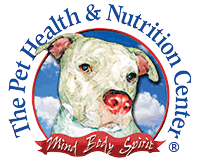Bird Toy Safe and Unsafe Material
It is very unfortunate to know that many birds suffer serious injuries or premature death due to toys or items places in their cages. Especially when you understand that their owners were trying to do their best to provide entertainment and quality of life for their bird. Unfortunately, the bird owners were ignorant to the fact that many pet product manufacturers have more of an interest in profit than in pet safety and many retailers do not spend much time at all educating themselves on the products they carry.
Well, luckily you have the Pet Health and Nutrition Center on your side. We spend lots of time and energy researching and testing products before we offer them to you. However, even though you may rely on what is offered by the Pet Health and Nutrition Center, knowledge is still your most powerful weapon to keep your bird safe and happy. Following is a list bird safe and unsafe material. We did our best to compile solid information, but always keep your eyes open for other tidbits you can pick up to keep your bird safe.
Please keep in mind that we use the word safe to point out materials generally considered not harmful to birds. Any material or toy is never 100% safe, accidents do happen, but by following our suggestions you will be a whole lot nearer to ensuring the safety of your bird. Please also read our article BIRD TOXIC ITEMS for a more thorough listing of dangerous foods and materials.
Safe Bird Toy Material
-
Woods (Not a complete list)
Pine, balsa, birch, basswood, poplar, maple, walnut, ash, apple, elm, cactus(cholla), manzanita.
-
Rope
100% natural fiber ropes such as cotton, hemp and sisal.
-
Chain
Stainless steel is best, being non-toxic, zinc and lead free and easy to clean. Nickel plated is also acceptable. Links should be welded not open.
-
Acrylic
Safe and virtually indestructible. Should be at least 3/16" thick. Wood is preferable for birds who like to chew. See: warning in unsafe section.
-
Leather
Great for birds to safely play with and chew; love to untie knots.**Only use vegetable tanned leather. Replace wet or soiled leather as bacteria may flourish.
-
Fasteners
Quick links or C-clamps are the safest to attach toys to your bird's play area. They can be tightened with pliers if your bird loosens them.
-
Rings
Properly sized so your bird can not get his head in and possibly choke.
-
Bells
Birds love to make noise. The cow or liberty bell design is safest. You must make sure the clapper (small component that bangs against the inside of the bell) can not be removed or it may be swallowed and present a choking danger. Should be appropriately sized for your bird.
*Various other safe materials include palm leaf and abaca fibers, cuttlebone, coconut shell and coco-husks.
UnSafe Bird Toy Material
-
Woods
Cedar, red cherry, plywood, oak. *Never use treated wood!(Arsenic). Avoid using natural branches from outside as they may be contaminated in some way you are not aware of. Avoid flavored woods as the flavorings are unhealthy and birds should not be encouraged to eat wood. The sugars used can also promote bacterial growth.
-
Rope
Avoid nylon, due to its strength it can result in cuts and other serious injuries.
-
Chain
Avoid zinc coated or galvanized chain and components. Birds are very susceptible to zinc toxicity. Avoid chain with open links as these may provide sharp surfaces and narrow openings where tongues or toes can become caught. Make sure links are properly sized for your bird and do not offer a place where body parts can become caught.
-
Acrylic
Make sure you do not give acrylic or plastic toys meant for smaller birds such as parakeets to larger birds. They may break the components too easily and if ingested the sharp edges may injure your bird.
-
Leather
Avoid dyed leather or leather tanned with chemicals (chromium and formaldehyde). Because of this you should avoid letting your bird chew on old leather items such as shoes, purses wallets, belts etc.
-
Fasteners
Avoid split key ring type fasteners, snap type hooks and spring loaded clips. As birds chew or play with these they all present the hazard of getting tongues or toes caught.
-
Rings
Avoid improperly sized rings in which your bird may get his head caught. Also, avoid toys that have multiple rings looped together as this presents an entanglement and possible hanging issue.
-
Bells
Clapper(small component that bangs against the inside of the bell) should be secure. Clapper should not be lead- will dent with fingernail if it is lead. Avoid jingle type bells because toes can get cut or caught in narrow openings. Bell should be properly sized for your bird.
Always make sure that rope, chain and leather toys are hung close to the surface from which the toy is being hung and that the length is always paid attention to as components are destroyed. Doing this will help prevent your bird from becoming entangled and possibly choking or hanging himself. Avoid zinc, harmful chemicals, glues, adhesives(plywood), lacquers, paints, colored magazines and newspapers(harmful inks and chemicals), toothbrushes(nylon fibers can be dangerous), cardboard(harmful glues), toilet paper and paper towel tubes(harmful glues), key rings(tongue getting caught), plastic bags, cellophane, foam and felt(all four will not pass through your bird if ingested) plastic coated wires and vinyl baby toys Following these guidelines will go along way towards keeping your bird safe.
Some experts recommend always monitoring your bird while he is playing with toys, especially new ones. Try to always keep your bird secure, especially when your are not present. Read our article on BIRD TOXIC ITEMS for details on foods to avoid and dangerous household items and cleaners.

